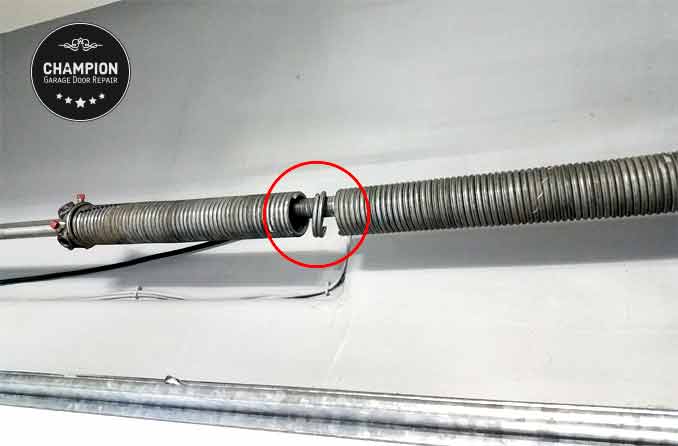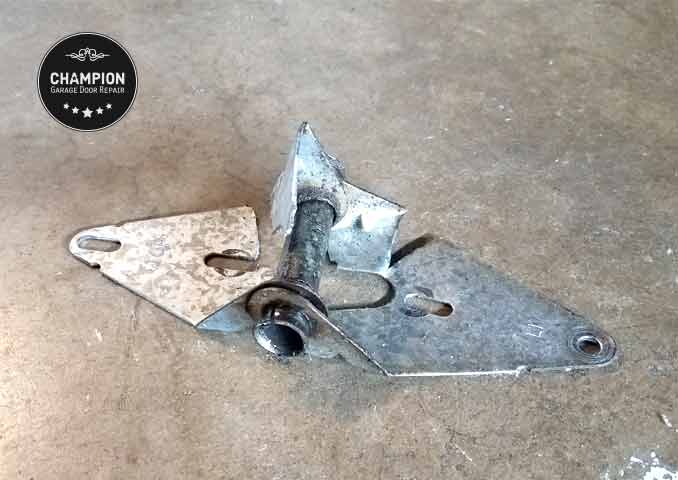Like any mechanical object, garage doors are susceptible to problems and breakage. In this guide, we explore the most common garage door problems, their potential causes, and offer effective solutions for prevention or repair.
1. Garage Door Won’t Close
A garage door that won’t close or starts closing but then opens back up may indicate various issues, such as: an object or debris blocking the sensors, the sensors are misaligned or defective, the sensor’s lens may be damaged from the sun, defective RPM sensor or travel module, worn motor or defective logic board, range problems or defective receiver, balance problems or broken spring, sagging door sections, and broken cable or roller.
Begin by inspecting the garage door for any signs of breakage and testing its balance. If no obvious breakage is found, check for an error code from the garage door opener troubleshooting LED and refer to the owner’s manual.
Inspect the LED light on the garage door sensors, located at both bottom ends of the garage door tracks. If one LED is flashing, clean the sensors with a soft cloth, removing debris, dust, and any objects that may be obstructing the door’s path. Attempt to realign them by ensuring both sensors face each other to the point that the LED light remains steady.
Try to restart the door opener by unplugging it and disconnecting the backup battery (if applicable) for a minute. If the sensor LED isn’t illuminated or continues flashing after the restart and alignment, inspect the wiring and connection points. Replace the sensors or wires if necessary.
2. Garage Door Cable Is Off the Pulley or Broken
Door cables can come off the pulley or break due to various reasons, such as an object getting caught in the door’s path, a poorly maintained garage door, improper balance, the wrong size or a broken spring, worn or broken rollers, worn or broken bearings, worn or broken hinges, and a broken pulley.
In a scenario where the cable comes off the pulley on one side of the door, the force generated by the springs is applied to only one side of the garage door. This results in a shift in the door’s mass, an uneven distribution of the spring’s torque, and may lead to the garage door becoming stuck halfway or in the open position.
You can attempt to fix the cable by lifting the garage door all the way up, ensuring that both ends of the door are at the same level. Anchor the door in place with vice grips, blocking the tracks. Next, mark the pulley’s position with a marker, release its locking bolts, and straighten or unravel the cable. If the cable is broken or frayed, replace it with a new one.
Insert the cable tip into the pulley’s slot and ensure the cable’s loop is securely fastened to the bottom bracket lip. Begin rotating the pulley while ensuring the cable is properly tucked into the pulley’s groove. Once the pulley is back to the marked position, tighten the pulley’s locking bolts. Subsequently, test the door and assess its balance. If the issue persists or if the door is uneven or crooked after fixing the cable, reset the torsion assembly and balance the door.
In many cases, a cable that has come off the pulley or is broken on your overhead garage door can be a safety hazard, and the door should not be used in such a situation. Operating a garage door with a faulty cable or cutting the door cables could cause it to come off the tracks, potentially damaging the door’s sections and the tracks.
3. Broken Garage Door Spring
All garage doors, including roll-up, sectional, and swing-up, use springs to counterbalance their weight. Whether it’s extension or torsion springs, they will eventually fracture and break due to the deformation process.
If your garage door spring is broken, the door likely won’t open or may only open a foot before stopping. It may produce unusual sounds and be extremely heavy to lift. Additionally, you’ll notice an approximate 2-inch gap between the spring’s coils. If your garage door has two or more springs, consider replacing all of them since all equally wear out over time.

To repair a broken spring, you first need to obtain a replacement. Springs are not one-size-fits-all; therefore, you’ll need to determine the spring’s properties, such as inside diameter, length, and wire diameter. To accurately measure the spring’s wire diameter, use designated micrometers, as using a ruler and counting the coils may produce inaccurate results. Alternatively, you can take the broken spring to a local garage door repair company that can measure it for you.
Once you have the replacement spring, disassemble the torsion assembly and replace the broken spring with the new one. Add tension to the new spring using designated winding bars and perform calibrations in accordance with the manufacturer’s recommendations. If those recommendations aren’t available, add one revolution to each spring for each foot of door height.
4. Garage Door Won’t Open
A garage door that won’t open can result from various malfunctions, including the aforementioned broken spring, no power reaching the opener, defective garage door opener, objects caught in the door’s path, and a door lock left in a locked state.
Inspect the garage door for any visible signs of breakage. Ensure that there aren’t any objects blocking the doorway. Check the locks (if applicable) and the power in the garage. Attempt using the door manually; if it moves smoothly up and down, look for an error code from the opener’s troubleshooting LED light. Refer to the owner’s manual and perform necessary repairs as directed by the manufacturer.
5. No Power to the Garage Door Opener
Repairing a garage door opener with no power can be as easy and simple as checking to see if the opener is unplugged. First, check the outlet and the garage circuit breaker. Inspect the opener for loose connections, and proceed to replace the motherboard, transformer, or motor as necessary.
6. Garage Door Remote Is Not Working
If your garage door remote isn’t working, start by checking the opener’s hardwired wall button. If both the button and remotes are unresponsive, it usually indicates either a lack of power or a defect in the opener. If the hardwired wall button is functional, proceed to test other remotes. Replace the batteries or replace the defective remote as necessary.
If none of the remotes are working, ensure that the opener’s vacation mode is off. Try reprogramming the remotes using the opener’s learn button. If none of the remotes will program, the receiver may be defective. Purchase a replacement receiver based on your opener’s model number and replace it as directed by the manufacturer.
If the remotes will program but work intermittently, not work at all, or are experiencing range problems such as not working from outside the garage, the issue could be frequency interference. Test the remotes’ range and proceed to update the frequency by retrofitting a receiver or by replacing the opener.
7. Garage Door Is Binding
Binding problems not only cause the garage door to stick or reverse but may also damage the garage door. This can result in poor performance, premature failure of the door mechanisms and the potential for the garage door to come off the tracks.

If your garage door is binding, inspect the door rollers and hinges for breakage and wear. Replace and lubricate them as needed. Additionally, check the door tracks and torsion assembly for misalignment. Finally, inspect the garage frame for any deformation or mispositioned moldings.
Troubleshooting and Fixing Common Garage Door Problems
While many garage door problems can be fixed on your own, attempting to address complex breakdowns and perform repairs without the appropriate tools and a basic understanding of garage door mechanics can lead to further damage and potential injuries. If you’re unsure about how to perform repairs safely, contact a licensed garage door repair company.
Best Practices to Prevent Problems
Lubricating the garage door, performing maintenance and scheduling regular inspections by a certified service technician can significantly extend the lifespan of your garage door and reduce the likelihood of common problems and major repairs.








Garage door off its tracks is a serious problem. I have noticed that my garage door is not working properly and figured that it has something to do with its track that is not enabling it to operate the way it should be.
nice post